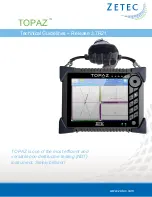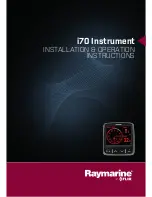
¾
Use accessing aids and steps only at stand-
still. During operation it is not permitted to
ride on the machine as a passenger! Parts
actuated by external forces (e.g. hydraulics)
have crushing and shearing points! Power op-
erated machine parts must only be actuated
if persons keep a sufficient safety distances
to the machine!
¾
Secure the machine against unintended start-
ing and accidental rolling before leaving it. For
this purpose apply the parking brake, shut
down the engine and pull out the ignition key.
1.6.3 Changing equipment
¾
Secure the machine against unintended roll-
ing away!
¾
Secure raised frame parts you have to work
under with suitable supports!
¾
Caution! Danger of injury caused by protrud-
ing parts (boom parts, etc.)!
¾
Do not step on moving or other rotating parts
to climb onto the machine. You could fall and
be seriously injured.
1.6.4 Hydraulic system
WARNING
Infection of the skin caused by hydraulic oil!
¾
The hydraulic system is under high pressure!
¾
Ensure correct connection of the hydraulic
hoses!
¾
The hydraulic system must be depressurized
before connecting hydraulic hoses!
¾
Blocking actuators on the machine, which
serve the purpose of directly executing hy-
draulic or electric movements of components,
such as e.g. folding, slewing and pushing
processes, is prohibited.
The corresponding movements must auto-
matically stop once you release the corre-
sponding actuator.
This does not apply for equipment which
- are continuous or
- automatically controlled or
- require a floating or pressure position be
-
cause of their function
¾
Before starting work in the hydraulic system
- Place down/park the machine
- depressurize the hydraulic system
- shut down the engine
- apply the parking brake
- pull out the ignition key
¾
Pressure accumulator:
Depending on the equipment the hydraulic
system may have a pressure accumulator
installed. Do not open or work (welding,
drilling) on the pressure accumulator.
Even after being emptied, the accumulator
is still preloaded by gas pressure. Always
depressurize the pressure accumulator
before starting work on the hydraulics.
The pressure gauge (if present) should
not indicate any pressure. The pressure
in the pressure gauge must drop to 0 bar.
Only then may work be carried out on the
hydraulic system.
¾
Have the hydraulic hoses inspected by an ex-
pert under occupational safety related aspects
at least once every year!
¾
Replace hydraulic hoses if damaged or exces-
sively aged! Use only genuine hydraulic hoses
from HORSCH LEEB AS!
¾
The utilization period of hydraulic hoses
should not exceed six years, including a pos-
sible storage time of maximum two years.
Even if properly stored and under permissible
stress, hoses and hose connections are sub-
ject to natural ageing, which limits their shelf
life and utilization period. Deviating from this,
the utilization period can also be determined
on the basis of empirical values, particularly
under due consideration of the endangering
potential. For hoses and hose lines made of
thermoplastics other guide values may be
decisive.
19
Содержание LEEB PT 330
Страница 4: ......
Страница 6: ......
Страница 33: ...1 17 Position of safety stickers 33...
Страница 34: ...34...
Страница 173: ...NOTE Lubricate the lubrication points on the folding boom every 50 operating hours or once every week 173...
Страница 187: ...Diagram a with example 187...
Страница 201: ...201...
Страница 202: ......
















































